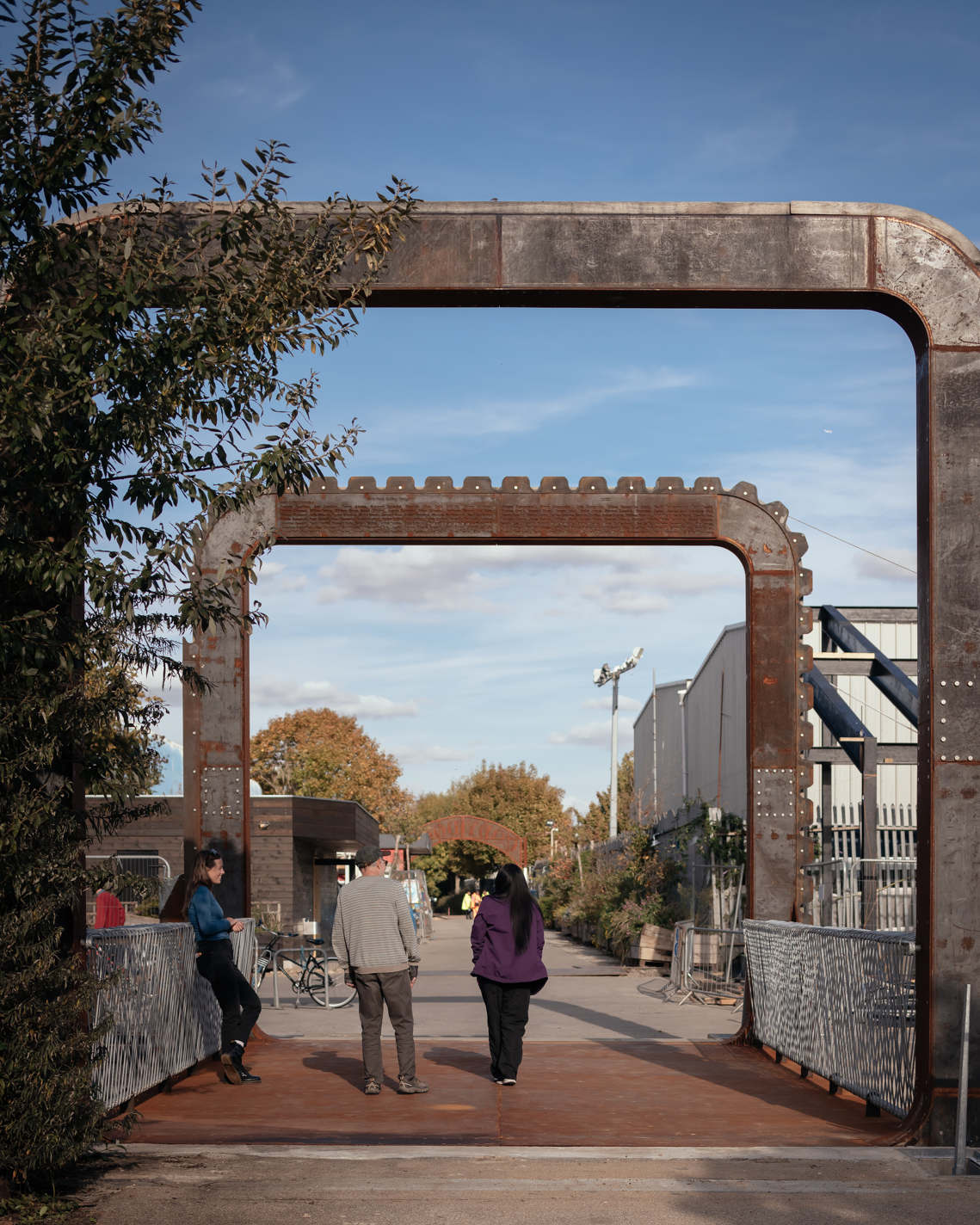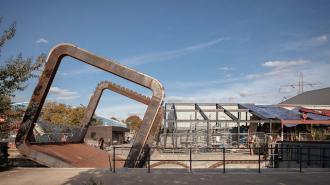When it came to figuring out how to move their new bridge to let boats pass by, architect Thomas Randall-Page took an unusual tack.
Rather than the usual designs — elevating the whole thing straight up like Yoda raising an X-wing, or the giant “pinball flippers” approach, as Fast Company’s Elissaveta M. Brandon wonderfully put it — the London-based designer created an innovative mechanism that can be solely powered by people.
The Cody Dock rolling bridge, built by Cake Designs, does exactly that: it rolls along a track in the canal it crosses, flipping its deck to become a roof with enough space underneath to allow boats to pass. It took seven years of research and nearly £250,000 (about $340,000) to build the bridge, Fast Company reported — far more time and money than a traditional, small footbridge would have demanded.
It’s “not possible to justify everything” in the design, Randall-Page told FastCo. “Part of it is that it’s really fun, and really playful,” he said. “And the unexpectedness of the way it moves is the joy of it.”

A spectacle at Cody Dock: Located in east London where the Thames is joined by the tidal River Lea, Cody Dock is a former industrial dock that now hosts a creative community, part of a revitalization effort for the Lower Lea area.
To reconnect the previously derelict dock’s with the waters of the Lea required destroying an old dam and creating a footbridge across the canal, Randall-Park explained. The architect wanted to seize on the natural “potential for public spectacle” a bridge opening provides.
A rolling bridge: The bridge’s most distinguishing feature are its twin squares, two frames marking either end that provide it with a Victorian-tinged, industrial chic silhouette. Studded with teeth, those portals convert to cogs when the bridge needs to be moved, rolling along rails embedded into the walls of the canal.
The tops of the squares are weighted, balancing out the weight of the deck beneath them. Thanks to this balance, the entire 13-tonne bridge can be rolled purely by human muscle using a pair of hand winches.
Simple exposed gearing has two advantages, FastCo reported: it allows for easy examination if there’s an issue, and it pulls from London’s heritage of Victorian-era public works.
The rolling bridge was well-received by The Guardian’s architecture critic Rowan Moore.
“It is, to be sure, a bit of a folly, definitely not the cheapest and easiest way of getting the job done,” Moore wrote. “There’s something a bit Fitzcarraldo about the determination with which an eccentric idea has been pursued. But the finished object gives, as Randall-Page puts it, ‘childlike joy’.”
We’d love to hear from you! If you have a comment about this article or if you have a tip for a future Freethink story, please email us at [email protected].






